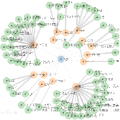We study the problem of embedding-based entity alignment between knowledge graphs (KGs). Previous works mainly focus on the relational structure of entities. Some further incorporate another type of features, such as attributes, for refinement. However, a vast of entity features are still unexplored or not equally treated together, which impairs the accuracy and robustness of embedding-based entity alignment. In this paper, we propose a novel framework that unifies multiple views of entities to learn embeddings for entity alignment. Specifically, we embed entities based on the views of entity names, relations and attributes, with several combination strategies. Furthermore, we design some cross-KG inference methods to enhance the alignment between two KGs. Our experiments on real-world datasets show that the proposed framework significantly outperforms the state-of-the-art embedding-based entity alignment methods. The selected views, cross-KG inference and combination strategies all contribute to the performance improvement.
翻译:我们研究了知识图表(KGs)之间基于嵌入实体的协调统一问题。以前的工作主要侧重于实体的关系结构。有些工作还进一步纳入了另一种类型的特征,如属性,以便加以完善。然而,大量实体特征仍然没有得到探索,或者没有得到同等对待,这损害了基于嵌入实体的协调统一的准确性和稳健性。在本文件中,我们提出了一个新的框架,将各实体的多种观点统一起来,以学习实体一致性的嵌入。具体地说,我们根据实体名称、关系和属性的观点将实体嵌入实体,并采用若干组合战略。此外,我们设计了一些跨KG推论方法,以加强两个KGs之间的协调一致。我们在现实世界数据集上的实验表明,拟议的框架大大超越了基于嵌入实体的状态的协调统一方法。选定的观点、交叉KG推论和组合战略都有助于绩效的改进。



